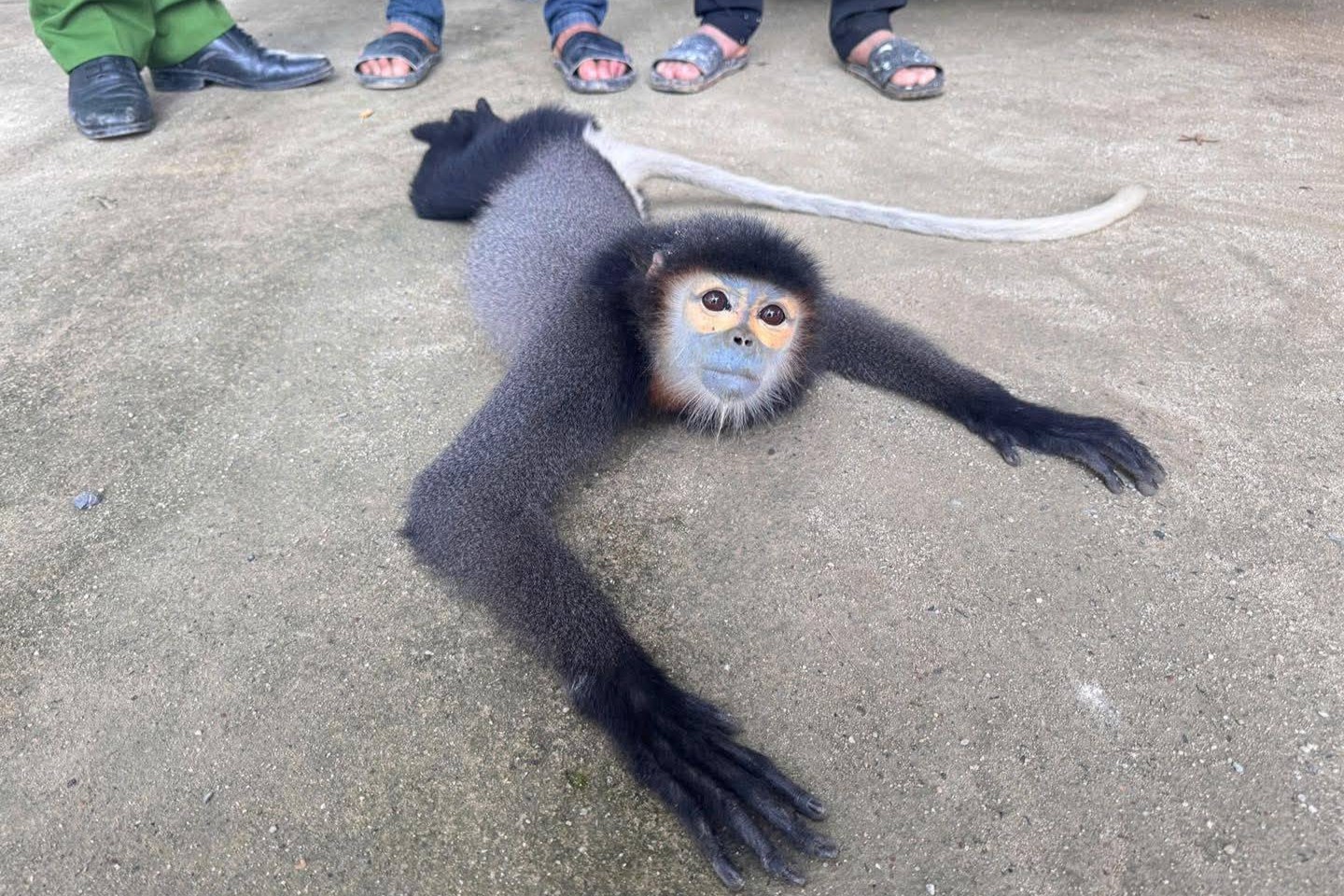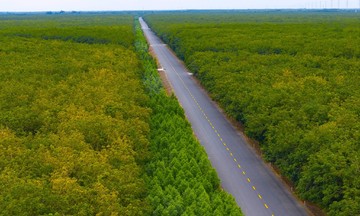On the morning of 29/6, Dinh Quoc Huy, head of the Da Huoai Forest Protection Department, said the black-shanked douc langur had been transferred to the wildlife rescue center at Cat Tien National Park.
The rescue team is currently caring for and treating the langur. It will be released back into the wild after recovery. "Perhaps this afternoon, rescue staff will take the langur to the hospital for an X-ray to determine why its legs are paralyzed, so that proper treatment can be administered," Huy said.
 |
The black-shanked douc langur was handed over by residents in a paralyzed state. Photo: Forest Protection Department |
The black-shanked douc langur was handed over by residents in a paralyzed state. Photo: Forest Protection Department
Three days prior, Tran Ngoc Phu, 30, a resident of Da Teh 2 commune, and two friends discovered the langur lying by the roadside in the Deo Con O forest area along provincial road 725 (Da Teh 3 commune) while returning from work. The langur's legs were paralyzed, and it couldn't move.
Recognizing it as a rare and endangered species, Phu's group transported the langur to the Da Teh 3 Commune Police station. The police then contacted the Da Huoai Forest Protection Department to receive the animal as per regulations.
The black-shanked douc langur (Pygathrix nigripes) is a leaf-eating primate endemic to Vietnam, distributed in the southern Truong Son range. It is currently listed in the Vietnam Red Book and the IUCN Red List as critically endangered.
Viet Quoc












